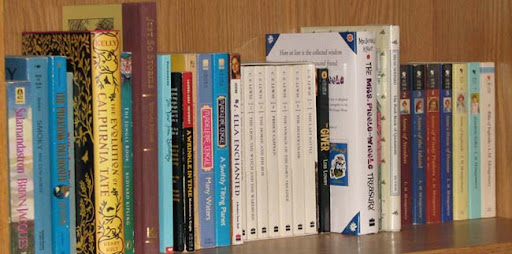Bibliography:
McKissack, Patricia. 2001. Goin’ Someplace Special. Ill by. Jerry Pinkney. New York: Atheneum Books. ISBN: 0689818858.
Summary:
‘Tricia Ann begs her grandmother to let her go “someplace special” by herself. Feeling grown-up and capable, she steps outside into 1950s segregated Nashville. As a young African-American girl, she faces discrimination on her journey. She must sit (or stand) in the back of the bus. She can’t sit on a park bench, or enter a grand hotel, or sit in the front rows for a music performance. She is alternately angry and discouraged by the signs and the hurtful words, but with the help of friends and her own fighting spirit, she makes it to “someplace special” – the public library.
Analysis:
The author does not reveal where “someplace special” is until the very end of the book, which is an effective narrative technique. The reader is left wondering whether it is a park or a church or a relative’s house or any number of places. In an author’s note, Patricia McKissack says that the story is based on her own childhood, and that the public library in Nashville was one of the few non-segregated places in town.
Each page has just the right amount of text for reading aloud, and the “fuzzy” watercolor illustrations are gorgeous. Full-color and full-spread, the illustrations of ‘Tricia Ann’s journey really make the book something special. He pays careful attention to skin tone and facial expressions.
The friendly people who encourage ‘Tricia Ann on her way are of both races, from a jovial African-American street vendor to a kind elderly white woman. And ‘Tricia Ann remembers her grandmother’s advice, too: “Hold ‘yo head up and act like you b’long to somebody” and “You are somebody, a human being- no better, no worse than anybody else in this world.” This is an inspirational message to all who read this book.
Reviews/Awards:
2002 Coretta Scott King Illustrator Award Winner
“An afterword explains McKissack's connection to the tale, and by putting such a personal face on segregation she makes its injustices painfully real for her audience. Pinkney's (previously paired with McKissack for Mirandy and Brother Wind) luminescent watercolors evoke the '50s, from fashions to finned cars, and he captures every ounce of 'Tricia Ann's eagerness, humiliation and quiet triumph at the end.” Publisher’s Weekly
“There are many books about a child's first trip alone, and many books about racism and the struggle for civil rights, but this book is about more than either: it is the story of a child facing a difficult time sustained by the support of the adults in her life. McKissack and Pinkney strike just the right balance in a picture book for young readers and listeners: informative without being preachy; hopeful without being sentimental.” Horn Book
Connections:
* Read along with an accessible biography of Rosa Parks, and talk about how ‘Tricia Ann couldn’t sit in the front of the bus, and what Rosa Parks did to change that.


No comments:
Post a Comment